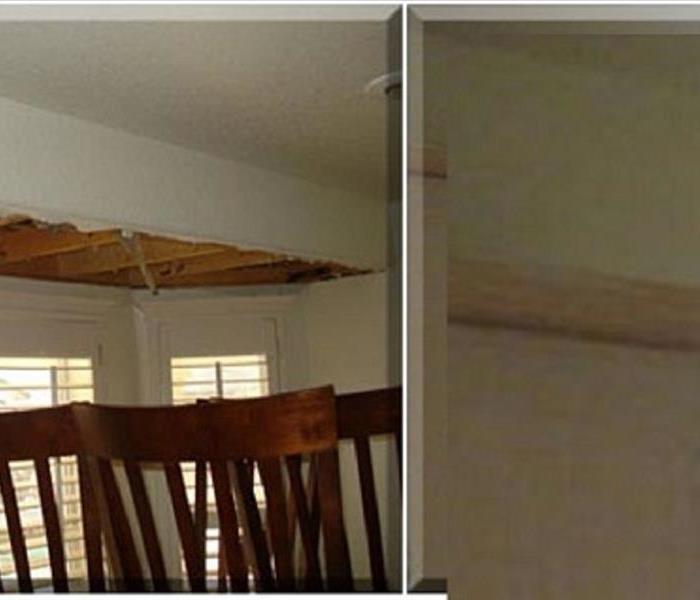Water Damage...What you don't see can hurt you on Cape Cod, Nantucket and Martha's Vineyard
11/14/2015 (Permalink)
 Just because you don't see the obvious symptoms of a water damage doesn't mean you are safe from property damage.
Just because you don't see the obvious symptoms of a water damage doesn't mean you are safe from property damage.
Just because you can't see the water damage in front of you, doesn't mean that it isn't there. For many of my customers, reminders of last year’s unending snow storms and accompanying ice dams began to surface some time around the spring and even into the summer and autumn. That's when they started to notice water stains on interior walls or a soft, mushy area on the floor. Whenever water makes its way into a home, it will do damage and it will continue doing damage until the issue is completely resolved. And the only way to properly treat it is to call in a restoration company to repair the water damage.
Believe it or not, sometimes a flood in the house can potentially cause less water damage than an ice dam. When you come home and find two inches of water in your basement because of a burst pipe or failed water heater, you immediately jump into action to get the water damage repaired. But when an ice dam causes water to back up into your home, it does so very quietly and discretely…behind a wall, where you can’t see it. By the time it makes its presence known, in the form of peeling paint, soaked carpets, buckled floors or moldy black marks on the wall under a window or an interior wall, the damage is extensive. But since it is not interfering with your daily living, you shrug and promise to take care of it…one of these days. The danger with this type of damage is that most people…myself included…underestimate the severity of the problem. And the longer you wait to fix it, the more damage it does, eventually compromising the integrity of the structure.
Just after I moved into my home in 1997, we had a nor’easter during the winter but I was completely unaware that any water had gotten into the house. It wasn’t until years later during a June rainstorm when I noticed signs of a water damage. The rain was falling pretty hard and I remember thinking, “gee, it sounds like it’s coming right inside the house.” That’s because it was. The damage from the nor’easter had gone unchecked for so long that structural damage had started to occur. I had to have the entire front of my house reshingled, walls removed and replaced. The good news is that it was covered under my homeowner’s insurance.
I certainly hope that we do not have a winter like we had last year but if we do, there are some precautions you can take to reduce the risk of ice dams. Make sure the attic properly insulated. Clean the gutters. And, if possible, remove the snow from the roof between snow storms. You can also look for tell-tale signs of a water damage. Check for water stains or moisture in the attic or around the top of exterior walls on the top level of your home. If you notice any stains, contact a restoration company.





 24/7 Emergency Service
24/7 Emergency Service